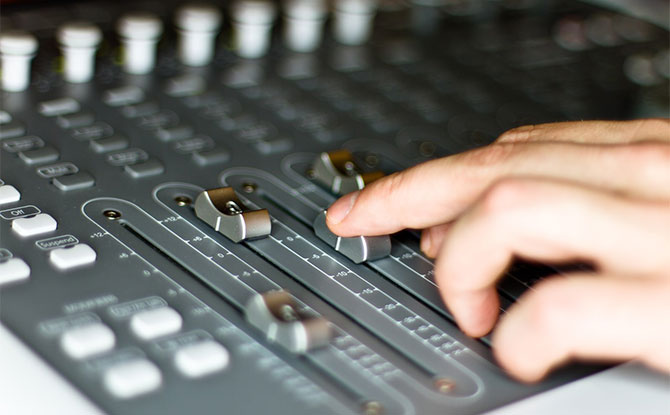Maybe someone told you that you need an audio mixer, but before you go out to get one, you may be wondering, do I really need it? What exactly is the benefit of an audio mixer, anyway?
Most people would recognise what an audio mixer looks like. But is it really necessary to get such a complicated piece of equipment with all the knobs and buttons? After all, perhaps all you want is to keep things as simple as possible.
Here are five things that an audio mixer does to make your life simpler.
What Does an Audio Mixer Do?
1. Adjust the Volume of the Sound

At the risk of stating the obvious, an audio mixer allows you to control the volume of the equipment plugged into the mixer. For example, if you have a microphone plugged into the mixer, you can use the mixer to control how loud or soft the sound output of the microphone will be over the loudspeakers.
2. Blend the Volume of Multiple Sound Sources
However, an audio mixer is more than just a volume control. Audio mixers can accept multiple sound sources simultaneously. Small mixers may have as few as two channels that can be used to receive two sound sources. On the other hand, large format mixers may be able to simultaneously handle 32 or 64 incoming sound sources.
Each of these sound sources are on individual channels and have individual faders to control the volume separate. This allows their volumes to be adjusted relative to each other. For example, if there is a singer with a microphone on channel 1 and a music backing track on channel 2, the mixer will allow you to adjust how loud the singer is in relation to the music backing track.
3. Get the Best Signal to Noise Ratio
Don’t be intimidated by the term “signal to noise ratio”. In layman’s terms, a good signal to noise ratio simply means that a sound can be clearly heard.
Noise, in this context, refers to the random sound that a piece of equipment makes when it is in operation. Any sound system, when it turn on, will inherently generate some noise. If the desired sound (e.g. from a microphone) is set too low, the noise may end up being audible and distract the listener. A mixer has a control known as an input gain or trim that allows you to increase the volume of the desired signal above the noise so that it can be clearly heard.
4. Adjust the Quality of the Sound
A mixer normally has some sound or signal processors built into it. These can be used to adjust or manipulate the quality of the incoming sound. A common signal processor found in audio mixers is an equalizer. This allows you to adjust whether a sound has more bass or treble. Different types of equalizers allow for varying levels of control over the quality of the sound.
Other signal processors that can be found in mixers include reverb and compression.
5. Send the Sound to Different Outputs
A mixer is typically used to send the sound out to one “destination”. This could be an amplifier and a set of loudspeakers, or to a computer for recording. This destination is usually connected to the mixer’s main stereo outputs.
However, you may also need to send the audio signal to other locations. For example, if the main outputs are being sent to a set of loudspeakers, you may also wish to simultaneously send the audio signal to an audio recorder to record what is going on.
A mixer has the ability to send the signal to multiple outputs at the same time. This creates a lot of flexibility when working with audio signals.

